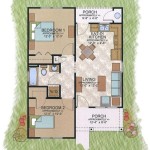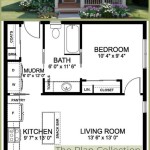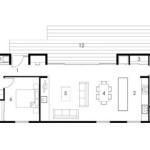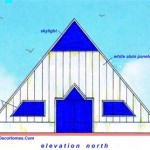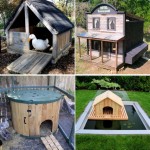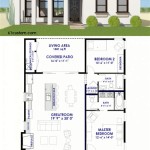A small house plan loft is a type of home design that features a raised upper floor, typically accessed by a ladder or staircase. This loft area can serve various purposes such as a sleeping area, a home office, or a storage space. Small house plans with lofts are popular among homeowners looking to maximize space and create a cozy and efficient living environment.
One common example of a small house plan loft is a studio apartment with a sleeping loft. This design is particularly suitable for individuals or couples who desire a compact yet functional living space. The loft provides an elevated sleeping area, while the main floor serves as the kitchen, living room, and dining area. By incorporating a loft, homeowners can create separate living zones within a limited square footage.
In this article, we will explore the advantages and considerations of small house plans with lofts. We will discuss the different types of lofts, their functionality, and how to incorporate them into a small house design. We will also provide tips and examples to help homeowners make informed decisions about whether a loft is a suitable option for their needs.
When considering a small house plan with a loft, there are several important points to keep in mind:
- Space optimization
- Separate living zones
- Loft height regulations
- Access to the loft
- Furniture considerations
- Ventilation and lighting
- Structural support
- Cost implications
By carefully considering these factors, homeowners can determine if a loft is a suitable addition to their small house plan and ensure that it meets their functional and aesthetic needs.
Space optimization
One of the primary advantages of small house plans with lofts is their ability to optimize space. By utilizing the vertical space within a home, lofts can create additional living areas without significantly increasing the overall footprint of the house.
- Increased storage capacity: Lofts can be used to store seasonal items, bulky belongings, and otherthat are not frequently used. This frees up valuable space on the main floor for everyday essentials and reduces clutter.
- Separate sleeping quarters: A loft can be converted into a cozy sleeping area, providing a private and elevated retreat. This is particularly beneficial in small homes where bedrooms may be limited or cramped.
- Multi-purpose spaces: Lofts can be designed to serve multiple functions. For example, a loft could be used as a home office during the day and transformed into a guest room at night.
- Enhanced natural light: Lofts often feature windows or skylights that allow for ample natural light to enter the space. This can brighten up the entire home and create a more spacious and inviting atmosphere.
By creatively utilizing the vertical space, small house plans with lofts can maximize functionality and create a comfortable and efficient living environment.
Separate living zones
Small house plans with lofts offer the unique advantage of creating separate living zones within a limited space. By utilizing the vertical space, homeowners can establish distinct areas for various activities, enhancing privacy and comfort.
- Private sleeping quarters: Lofts can be transformed into cozy and private sleeping areas, separated from the main living spaces. This is particularly beneficial for families or individuals who desire a quiet and secluded space for rest and relaxation.
- Dedicated workspaces: Lofts can be designed to accommodate dedicated workspaces, providing a quiet and distraction-free environment for studying, working, or pursuing hobbies. This separation between living and working areas promotes productivity and well-being.
- Multi-purpose guest rooms: Lofts can be converted into flexible guest rooms that can double as additional living spaces when not in use. This versatility allows homeowners to accommodate guests comfortably without sacrificing valuable space on the main floor.
- Play areas for children: For families with young children, lofts can be designed to serve as dedicated play areas. This separation from the main living areas provides a safe and stimulating space for children to play and explore.
By creating separate living zones within a small house plan, lofts offer homeowners increased privacy, functionality, and flexibility in their living spaces.
Loft height regulations
When incorporating a loft into a small house plan, it is essential to adhere to building codes and regulations regarding loft height. These regulations vary depending on the specific jurisdiction and building type, but generally, there are minimum and maximum height requirements that must be met.
Minimum height: Building codes typically specify a minimum height for habitable spaces, including lofts. This minimum height ensures that there is sufficient headroom and ventilation within the loft space. The exact minimum height requirement may vary, but it is commonly around 7 feet (2.1 meters) or more.
Maximum height: In some cases, there may also be maximum height restrictions for lofts. These restrictions are often imposed to ensure structural integrity and prevent the loft from becoming too dominant within the overall design of the house. The maximum height limit can vary depending on factors such as the size of the house, the type of roofing system, and local zoning regulations.
It is important to consult with local building authorities and architects to determine the specific loft height regulations that apply to your project. Failure to comply with these regulations can result in safety hazards, building code violations, and potential legal issues.
In addition to building codes, homeowners may also need to consider practical factors when determining the height of their loft. For example, a loft that is too high may make it difficult to access or use comfortably, while a loft that is too low may feel cramped and uncomfortable.
Access to the loft
Accessing the loft is an important consideration in small house plans with lofts. There are several common methods for accessing lofts, each with its own advantages and disadvantages.
- Ladders: Ladders are a simple and space-efficient way to access lofts. They are typically made of wood or metal and can be fixed or retractable. Ladders are relatively inexpensive to install, but they can be difficult to use, especially for individuals with limited mobility.
- Stairs: Stairs are a more comfortable and convenient way to access lofts, especially for regular use. They can be designed with various materials, such as wood, metal, or concrete, and can be customized to fit the specific dimensions and layout of the loft. However, stairs require more space than ladders and can be more expensive to install.
- Spiral staircases: Spiral staircases are a space-saving alternative to traditional stairs. They are typically made of metal and feature a helical design that winds around a central pole. Spiral staircases are visually appealing and can add a touch of elegance to a loft space. However, they can be more difficult to use than traditional stairs, especially for carrying bulky items.
- Built-in furniture: In some cases, lofts can be accessed through built-in furniture, such as a bookcase or closet. This can be a creative and space-efficient solution, but it may limit the functionality of the furniture and require custom design and installation.
The choice of access method depends on various factors, including the height of the loft, the frequency of use, the space available, and the overall design aesthetic. It is important to carefully consider these factors when planning the access to the loft to ensure both safety and convenience.
Furniture considerations
When furnishing a small house plan with a loft, it is important to carefully consider the size, scale, and functionality of furniture pieces. Here are some key considerations to keep in mind:
- Vertical storage: Lofts often have limited floor space, so it is important to maximize vertical storage options. Consider using tall bookshelves, stackable bins, and hanging organizers to store items and keep the space clutter-free.
- Multi-purpose furniture: Choose furniture pieces that serve multiple functions. For example, a coffee table with built-in storage can be used to store books, magazines, or other items. A sofa bed can be used for both seating and sleeping, saving valuable space.
- Low-profile furniture: Low-profile furniture can help to create a more spacious feel in a loft. Avoid bulky or oversized pieces that can overwhelm the space. Instead, opt for sleek and streamlined designs that make the loft feel larger and more inviting.
- Lightweight furniture: Lightweight furniture is easier to move around, which can be important in a loft with limited space. Consider using furniture made from materials such as aluminum, wicker, or plastic. These materials are durable and lightweight, making them ideal for loft living.
By carefully selecting furniture pieces that are both functional and space-saving, homeowners can create a comfortable and stylish living environment in their small house plan with a loft.
Ventilation and lighting
In small house plans with lofts, proper ventilation and lighting are essential for creating a healthy and comfortable living environment. Here are some key considerations:
- Natural ventilation: Lofts often have limited natural ventilation due to their enclosed nature. It is important to incorporate windows or skylights to allow for cross-ventilation and fresh air circulation. This helps to prevent stuffiness, reduce moisture buildup, and improve overall air quality.
- Mechanical ventilation: In addition to natural ventilation, mechanical ventilation may be necessary to supplement airflow in lofts. Ceiling fans or exhaust fans can be installed to circulate air and remove odors and pollutants. This is particularly important in lofts that are used as bedrooms or home offices.
- Lighting: Lofts often have limited natural light due to their location within the house and the presence of slanted ceilings. To ensure adequate lighting, a combination of natural and artificial light sources is recommended. Skylights or large windows can be used to bring in natural light, while recessed lighting, pendant lights, or floor lamps can be used to provide artificial light.
- Electrical wiring: Proper electrical wiring is crucial for providing power to light fixtures, fans, and other electrical devices in the loft. It is important to ensure that the electrical system is up to code and that all wiring is concealed for safety and aesthetic reasons.
By carefully considering ventilation and lighting, homeowners can create a loft space that is both comfortable and functional.
Structural support
Ensuring adequate structural support is crucial for the safety and stability of small house plans with lofts. The additional weight of the loft and its contents must be properly distributed and supported by the existing structure of the house.
One common method for providing structural support for lofts is to install beams or joists across the ceiling of the lower level. These beams or joists act as a framework that supports the weight of the loft floor and its contents. The size and spacing of the beams or joists will depend on the weight capacity required and the span of the loft.
In some cases, it may be necessary to reinforce the existing walls or foundation of the house to accommodate the additional load of the loft. This may involve adding additional studs to the walls or pouring a concrete footing to support the weight of the loft.
It is essential to consult with a qualified structural engineer to determine the appropriate structural support system for a specific loft design. The engineer can assess the existing structure of the house and calculate the necessary reinforcements to ensure the safety and integrity of the loft.
By incorporating proper structural support, homeowners can create a loft space that is both functional and safe.
Cost implications
Incorporating a loft into a small house plan can have various cost implications that homeowners should consider before embarking on the project. These costs can vary depending on factors such as the size and complexity of the loft, the materials used, and the labor costs in the specific location.
One of the primary cost considerations is the structural support required for the loft. Installing beams, joists, or reinforcements to support the weight of the loft can be a significant expense. The cost of these structural elements will vary depending on the materials used and the complexity of the installation. In some cases, it may be necessary to hire a structural engineer to design and oversee the installation of the structural support system, which can add to the overall cost.
Another major cost factor is the materials used for the loft floor and walls. The choice of materials will impact both the cost and the overall aesthetic of the loft space. Hardwood floors, for example, are more expensive than laminate or carpet flooring, but they can add value and durability to the home. Similarly, the materials used for the loft walls, such as drywall, paneling, or brick, can vary in cost and appearance.
Labor costs are another significant consideration when budgeting for a loft addition. The cost of labor will vary depending on the location, the availability of skilled labor, and the complexity of the project. It is important to obtain quotes from multiple contractors to ensure that you are getting a fair price for the work.
In addition to these major cost considerations, there are other expenses to keep in mind, such as electrical wiring, plumbing (if a bathroom or kitchenette is added to the loft), insulation, and finishing touches like paint and trim. It is important to factor in all of these costs when planning a small house plan with a loft to avoid any unexpected expenses during construction.









Related Posts


